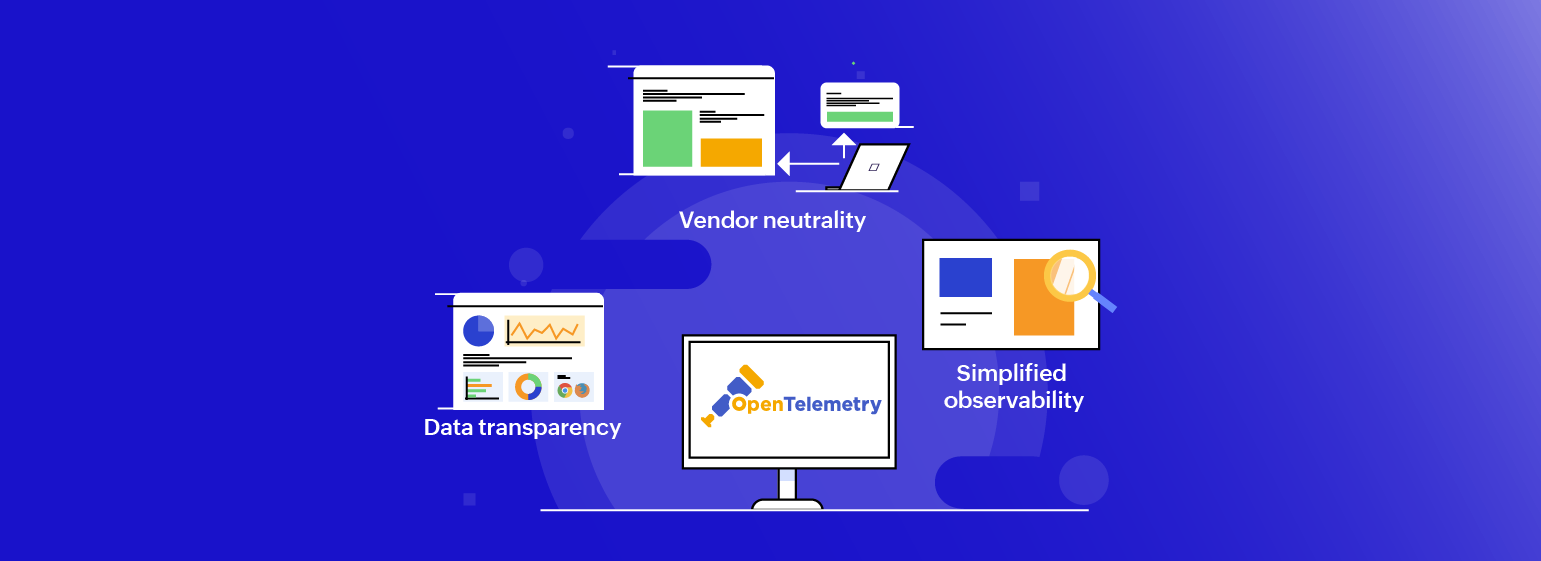3 key benefits that prove OpenTelemetry is the future of APM

Application performance monitoring (APM) solutions were designed to catch anomalies in an application or website's backend and provide meaningful insights to rectify issues in real time. Lately, though, APM solution providers have been left playing catch-up to be more inclusive of newly emerging technologies and the operational challenges they bring.
OpenTelemetry (OTel) simplifies the issues caused by the demands of modern applications. Creating a standard for collecting application telemetry data (metrics, traces, and logs) allows vendors to focus on effective problem solving by streamlining observability.
Before we get into the benefits of APM, let's briefly look at what OpenTelemetry is all about and why it is essential for monitoring.
What is OpenTelemetry?
OpenTelemetry is a Cloud-Native Computing Foundation sandbox project that was established to create a standard for instrumenting software. It is a collection of tools, APIs, and SDKs created to unite OpenTracing and OpenCensus. OpenTelemetry helps IT teams implement the instrumentation, capture, and export of machine data for analysis. This step is vital to understanding the performance and behavior of software.
The need for OpenTelemetry
Before OpenTelemetry gained widespread recognition in the APM world, developers were able to make do with OpenTracing and OpenCensus. While OpenTracing is a lightweight specification for tracing APIs, OpenCensus is a specification and a collection of libraries. The former aids developers in instrumenting code with a readily available or custom-built tracer, while developers using the latter use an agent to instrument their code. In addition to exporting trace data to the backend server, OpenCensus also accumulates and exports time-series metrics.
Although these two technologies can be used to collect the necessary data, developers had to choose one of the two technologies. OpenTelemetry was developed to bridge the gap between these two technologies.
With OpenTelemetry, IT professionals don't have to deal with the hassle of re-instrumenting code or installing different proprietary agents for multiple backend platforms. This ensures that the OpenTelemetry collector continues to trace data and export it seamlessly, eliminating the need to build new integrations as new technologies arise.
Now that we have covered how important OpenTelemetry is, let's look at why it is the future of APM.
-
It helps you beat vendor lock-in
Before any standardization for the collection of application telemetry data was established, client engineering teams using monitoring solutions had to manually instrument applications or use the solution provider's instrumentation libraries to meet vendor specifications. If you chose to switch to another vendor's monitoring solution, your engineers would have to spend time installing the respective instrumentation agents.
OpenTelemetry, on the other hand, is vendor-neutral, allowing you to have end-to-end visibility into your application's source code and an insight into any development in the community features and techniques to solve bugs. This flexibility is essential for companies to choose the best solutions and switch vendors at any point in time. -
There is complete transparency over the data being collected
As mentioned before, OpenTelemetry gives you full visibility into your application by guaranteeing complete transparency over the telemetry data being collected. This is important because the customers, which in this case are developers, prefer having complete control over the data they push and the ability to penetrate production servers, gaining full visibility of the application's performance. -
It simplifies observability
Applications need to be constantly monitored for key metrics to ensure optimal performance. Observability has been a major driving force behind the ongoing evolution of APM these past few years. Site24x7's full-stack observability platform captures metrics, traces, and logs, providing end-to-end visibility of the application's backend servers. OpenTelemetry delivers a standardized procedure for collecting metrics, events, logs, and traces and their supporting infrastructures required to understand the behavior of a modern, complex application. By standardizing this process, OpenTelemetry simplifies observability and takes APM to the next level.
OpenTelemetry is the key to gaining a holistic view of your application's workings and optimizing observability. With OpenTelemetry, organizations can worry less about how data is collected and work on improving what they do with that data, leverage the insights, and solve problems for their customers effectively.
Want to learn more about how Site24x7 monitors your application? Sign up for a free trial.
If Site24x7's full-stack observability platform captures metrics, traces, and logs ... and OpenTelemetry also delivers a standardized procedure for collecting metrics, events, logs, and traces ... then what is the difference between Site24x7 and OpenTelemetry?
They both seem to do the same thing.
Why would I buy Site24x7 when I can get OpenTelemetry for free?
Your article also says at the end, "Want to learn more about how Site24x7 monitors your application?"
No, I want to learn how Site24x7 Observes my application. I don't want to monitor it any more after reading this article, I want to Observe it.